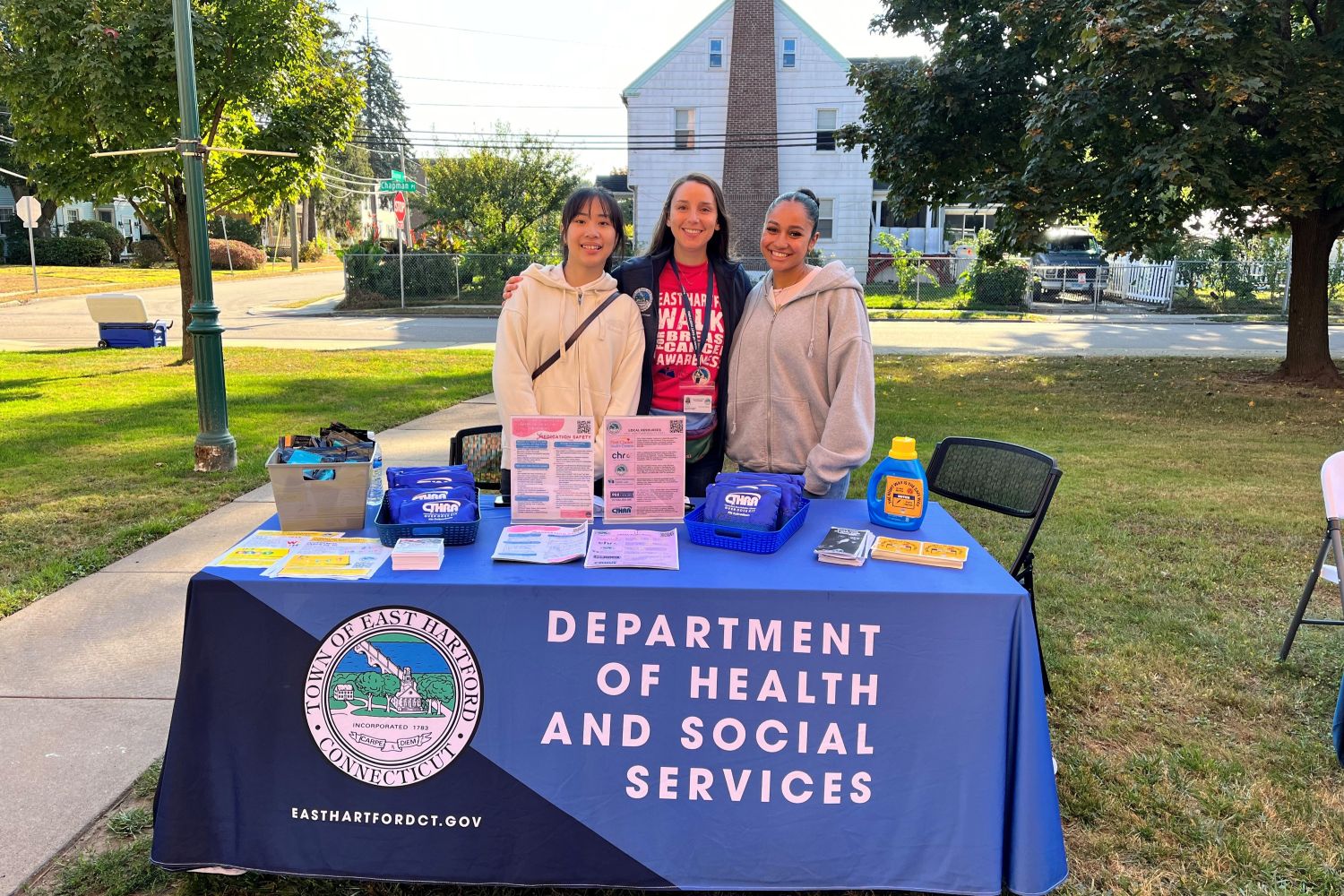One of the John Dempsey Hospital’s new quality improvement tools borrows lessons learned from the nuclear power industry, manufacturing and aviation.
It Takes a Team
The hospital’s journey to become highly reliable is bolstered by a team effort. That’s according to Ann Marie Capo, associate vice president and chief quality and patient safety officer, who is the executive sponsor of the implementation of the CHA collaborative, and is working directly with the HPI coach Steve Kresier. Here is a look at some of the leaders who are coordinating different facets of this project:
- Mell Hobson, director of professional development in the Department of Nursing, is leading the educational component, ensuring that more than 3,000 faculty and staff are trained.
- Pam Marshalkowski, of the Quality Department, is leading the “patient safety net” team which reviews and cross-walks Health Center safety events into the HPI categories which have been standardized across the state, assigning risk classification and maintaining our serious safety event rate (SSE).
- To date, quality assurance nurses Wendy Martinson and Alyce Ivy have conducted all the “root cause analysis” studies on the SSE’s using a standardized method that every hospital in Connecticut is now using.
- Unit-based safety coaches are currently being identified. They will be trained by Hobson and a designated member of her team.
- Deb Abromaitis, director of patient support, will take responsibility for the safety coaches. She will meet with safety coaches monthly, ensuring that the safety coaches are leading the unit based safety efforts, and are communicating what they are learning, and what they are working on with the staff in their areas.
- Members of the management team of John Dempsey Hospital: At the end of June, all managers and directors of nursing and support services will be trained on “apparent cause analysis” which is a systematic method of identifying why an error occurred. They then will be responsible for developing a corrective action plan for the error that occurred on their unit and also for sharing the learning with the other managers to ensure that the corrective actions are universally implemented to avoid a potential error in another area that does the same work.
- In October, the one-year anniversary of the start of the HPI work, Ann Marie Capo and Pam Marshalkowski will lead a common cause analysis team which will look at common errors and identify a systematic approach to eliminating these commonly made errors.
- Another arm of the collaborative is the Health Center’s involvement with the American Hospital Association’s Health Evidence Network (HEN) initiative with CHA. Caryl Ryan, nurse manager; Carol Schramm, clinical nurse specialist in the operating room; Wendy Martinson, quality assurance nurse; and Alyce Ivey, a quality assurance nurse who is assisting with data submission, have all been trained as AHA Fellows in this arm of the collaborative and are leading efforts to enter our data on the identified individual initiatives into a national data base which can compare our work against what other hospitals on an individual hospital level as well as a state and regional level with participating hospitals across the United States. An example of data shared is our rate of patient falls.
“Safety is a science. Reliability is a science. Like people in other high risk industries – where mistakes can’t be tolerated – we’re working to understand core concepts to prevent errors and enact success factors,” explained Mary Ellen (Mell) Hobson in a presentation during a recent Leadership Development Institute.

Hobson, director of professional development in the Department of Nursing, is leading the educational component of the Health Center’s involvement in a statewide initiative with the Connecticut Hospital Association (CHA) to eliminate all preventable harm by adapting evidence-based principles. The hospital is working with a coach from a national firm, Healthcare Performance Improvement (HPI) on this journey. The coach, Steve Kreiser, is a former Navy pilot.
“We’re learning specific tools based on high reliability techniques to improve safety for all of our patients,” Hobson said, noting that hospitals that have enacted high reliability practices have reduced serious safety events and improved safety scores by 80 percent or more.
John Dempsey Hospital is participating at the highest level in this three-year initiative, along with all the partner hospitals in the Hartford region that train UConn School of Medicine and Dental Medicine students, residents and fellows.
Ultimately, more than 3,000 John Dempsey Hospital and medical staff will be trained in high reliability/high performance techniques, Hobson said. To date, more than 267 employees have undergone training.
“This is a major investment for the Health Center, based on the most important goal possible: protecting our patients from unintended harm,” she said.
High reliability training will focus on five key areas, Hobson explained:
- Communicating clearly: this includes habits such as repeating back requests or questions to avoid misunderstandings and using phonetic and number clarifications
- Handing off care of patients safely
- Attention to detail
- Mentoring peers
- Practice and Accept a Questioning Attitude: in this culture, all staff are encouraged to ask questions and verify information
“The acronym is CHAMP, which is fitting since we are asking everyone to be a champion for our patients,” she added.
“High reliability speaks to the way we take care of patients. It compliments ongoing efforts to adopt tools from the Studer Group in the way we communicate with patients and families. Together, these tools will help us change the way we work and improve the care we provide for our patients, tying back to our tagline, ‘UConn: It begins with You’” added Ann Marie Capo, associate vice president and chief quality and patient safety officer.
The hospital has also started daily “safety huddles” to review safety incidents or near-misses in real time. The daily meetings are led by Dr. Mike Summerer, chief executive officer for John Dempsey Hospital.
“All of these efforts reflect a commitment to hardwire a new rigor in the way we communicate with each other and in turn, improve the overall care for patients,” Capo added.
Follow the UConn Health Center on Facebook, Twitter and YouTube.


